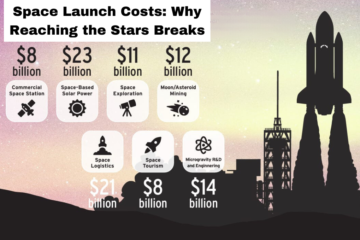Hello people! What further adaptations for life are required to support existence in the desert environment?
Space is not only an aspiration and perhaps a probability for generations, but present business initiatives such as the SpaceX Company have made more definite strides toward this fantasy. Mars is the next stop; SpaceX wants to produce long-term sustainable stays on Mars, which will put it under new pressure.
Let’s dive in!
The Future of Human Habitats in Space: How is SpaceX Pioneering Sustainable Living on Mars
Opinions on the Colonization of Mars by Elon Musk

The Starship is meant to become the main method of space transportation to make colonizing Mars as frequent as people want.
The journey is only the first step; the next is to cross the chasm.
SpaceX’s future is not only in sending people to Mars, but a long-term habitat would need to be built on Mars to help withstand the intense environment.
It has low average temperatures ranging from -80 degrees Fahrenheit to -60 degrees Celsius, very low atmospheric pressure of only 1 percent of that found on Earth with virtually no oxygen, and dust storms that can persist up to six months – problems that require creativity to overcome on the red planet.
Energy Generation
Dust storms, Mars’ position away from the Sun, and the absence of seasons also make solar power an unideal choice.
SpaceX is already looking for other energy sources, indicating an interest in nuclear systems that supply a continuous power flow irrespective of the climatic conditions outside. Atomic reactors would contain the heat source but still be large enough to support such primary loads as heating, life support, and water reclamation.
Life Support Systems: The surface habitat must be well equipped with a closed-loop life support system to maintain air, water, and waste recycling. Electrolysis can facilitate oxygen from the air on Mars, an essential component of the Martian surroundings.
In contrast, water, a necessity for survival, may be mined from the ice on the surface of Mars.
Regarding resource supply on Mars, SpaceX is expected to isolate the items and filter and recycle them to keep their supplies constant instead of recurring.
Agriculture and Food Production
Farming is difficult on Mars because there are no soils, and the planet has dangerous radiation levels.
Hydroponics or Aquaponics are ways to grow plants without soil, which SpaceX might use to ensure a constant supply of fresh produce. Along with greenhouses that protect plants from radiation, such methods could one day feed future Martians produced by the described techniques.
Radiation Protection

Radiation is a big issue on Mars because the planet does not have the iron shield that helps to protect planet Earth against dangerous cosmic and solar rays.
Most likely, SpaceX will use underground shelters or protective domes, which will be built from the material found on the surface of Mars, namely regolith. Establishing such structures will enable the set companies to benefit the lives of people settling on Mars.
Space tourism does not contradict SpaceX’s environmental concerns: SpaceX is committed to space sustainability.
Establishing a sustainable Mars mission or colony will depend largely on ISRU. This concept involves using resources available on Mars instead of those that might be shipped in from Earth.
This strategy is similar to SpaceX’s business model of getting things done efficiently and independently. In this case, mining natural resources can cut costs and waste and make future habitats designed for human settlements on Mars durable.
Conclusion
SpaceX is leading the way to crewed missions and sustainable colonization of Mars, focusing on issues such as creativity and audacity. The company is developing a framework to accommodate human expansion beyond Earth in energy systems, life support, agriculture, and resource management innovations. It is not a question now whether man can live on Mars but how SpaceX could make life on Mars sustainable for generations.
What is SpaceX’s New Strategy for Building a Sustainable Mars Colony?





